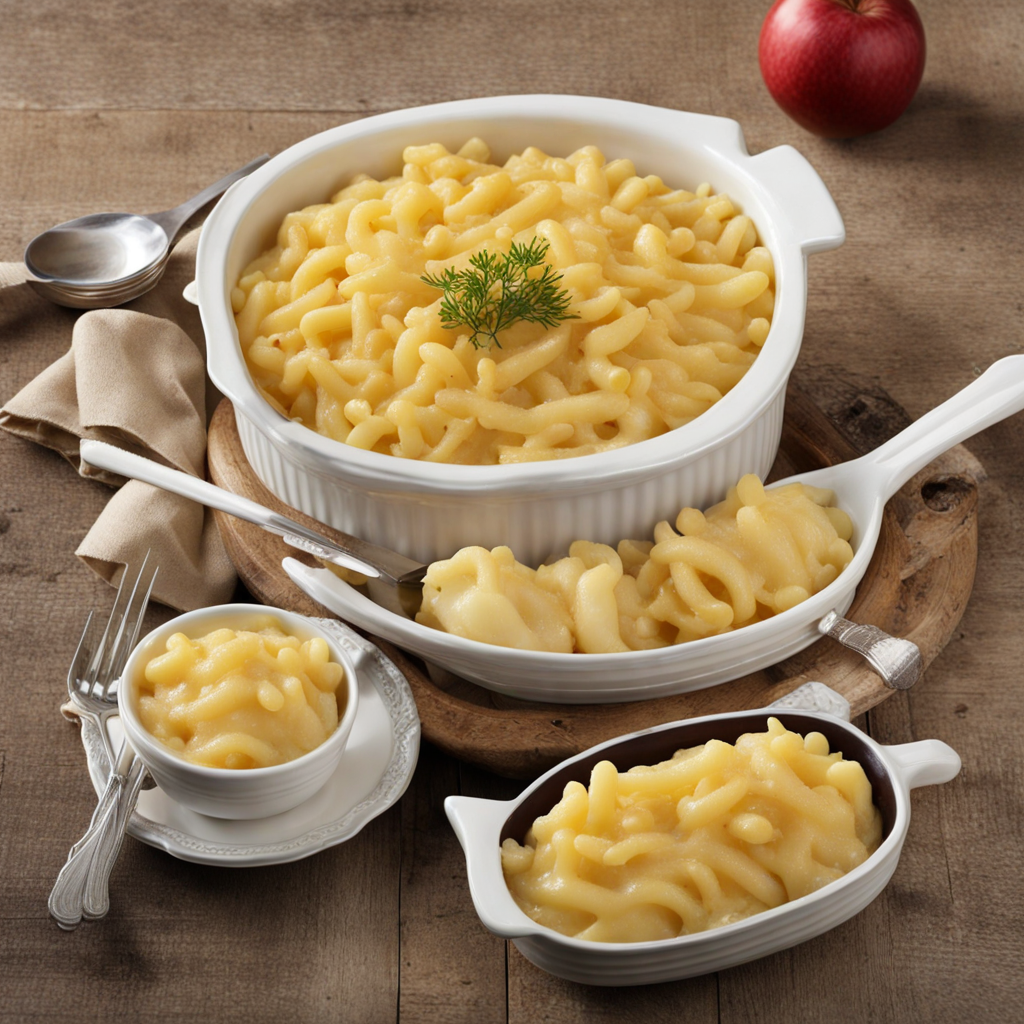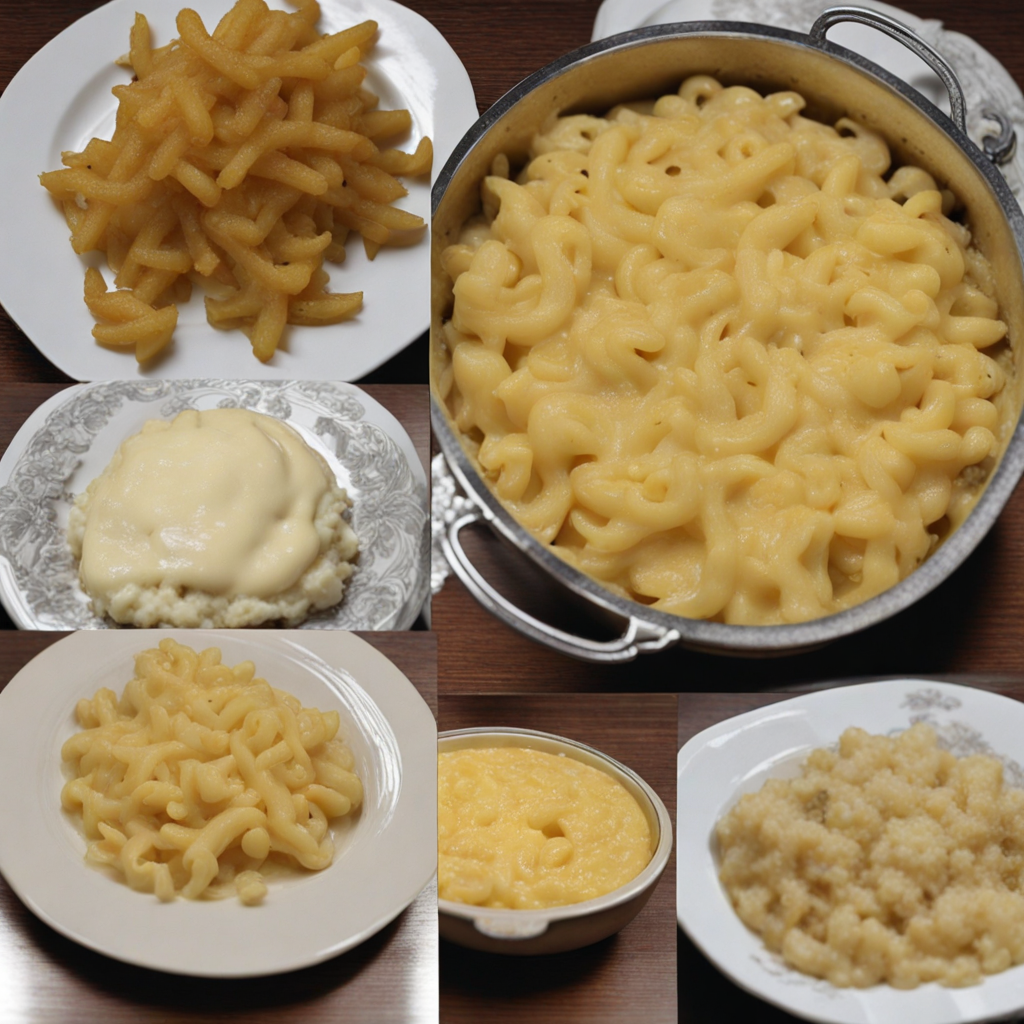Älplermagronen
Älplermagronen is a comforting Swiss dish that beautifully combines pasta, potatoes, and cheese into a hearty meal ideal for cold weather. Originating from the Alpine region, this dish is a celebration of simple, rustic ingredients that come together to create a rich and flavorful experience. The main components include macaroni, which serves as the base, alongside boiled potatoes that add a creamy texture. These ingredients are typically cooked together, allowing the starches to meld and create a delightful harmony of flavors. The dish is often enriched with a luscious cheese sauce, traditionally made with local Swiss cheeses like Gruyère or Emmental, which melt beautifully and provide a nutty, savory depth. The cheese is usually combined with cream or milk to create a velvety sauce that envelops the pasta and potatoes, making each bite indulgent and satisfying. To elevate the dish further, a sprinkle of crispy fried onions on top adds a delightful crunch and a burst of flavor that complements the creaminess beneath. Served with a side of applesauce, Älplermagronen offers a unique balance of savory and sweet, contrasting the rich, cheesy pasta with the fresh, fruity notes of apples. This combination not only enhances the overall taste but also reflects the traditional Swiss approach to food, where simplicity and quality ingredients shine through. Whether enjoyed as a main course or a comforting side dish, Älplermagronen is sure to provide an unforgettable culinary experience that transports you straight to the heart of the Swiss Alps.
How It Became This Dish
The History of Älplermagronen: Switzerland’s Heartwarming Alpine Dish #### Origins in the Alpine Landscape Älplermagronen, a traditional Swiss dish, embodies the rustic charm and hearty sustenance that characterize the culinary traditions of the Swiss Alps. The name itself derives from "Älpler," which refers to the mountain herdsmen or shepherds, and "Magronen," which is a variant of the Italian word "maccheroni," denoting pasta. This dish is a quintessential example of Alpine comfort food, combining pasta, potatoes, cheese, cream, and often served with caramelized onions and applesauce on the side. The origins of Älplermagronen can be traced back to the 19th century, amidst the pastoral lifestyle of Swiss mountain communities. As with many traditional dishes, the exact date of its inception is difficult to pinpoint. However, it is generally accepted that it emerged as a practical meal for farmers and herders who required hearty sustenance to fuel their physically demanding lifestyles. The ingredients used in Älplermagronen were readily available in the mountainous regions: potatoes and cheese from local dairies, pasta made from wheat, and cream from the rich milk produced by cows grazing on alpine pastures. #### Cultural Significance Älplermagronen is more than just a dish; it is a representation of Swiss culture and its close relationship with the land. The dish encapsulates the principles of simplicity and resourcefulness, utilizing ingredients that could be easily sourced and preserved in the harsh mountain winters. As Swiss culinary traditions often emphasize communal eating and sharing, Älplermagronen has become a staple in both family gatherings and festive occasions throughout the Alpine regions. The dish also reflects the wider cultural interactions within Switzerland. Switzerland is known for its multilingual population and varied culinary influences, with German, French, and Italian roots intertwining across regions. Älplermagronen, with its pasta and cheese, hints at Italian influences, while the use of potatoes and cream brings in elements common in Germanic cuisines. This characteristic of blending diverse culinary traditions showcases the Swiss spirit of unity and coexistence. #### Evolution Through the Ages As Swiss society evolved, so did Älplermagronen. In the early 20th century, the dish began to gain prominence beyond the confines of rural homes. With the advent of tourism in the Swiss Alps, visitors from around the world sought authentic local experiences, including traditional meals. Restaurants began to include Älplermagronen on their menus, allowing a broader audience to appreciate this comfort food. The post-World War II period marked significant changes in food culture across Europe, including Switzerland. As economic prosperity grew, so did the availability of diverse ingredients. While the traditional recipe remained popular, chefs began to experiment with variations, incorporating different types of cheeses, such as Gruyère or Emmental, and adding herbs and spices. Some versions even included vegetables like spinach or mushrooms, catering to changing tastes and dietary preferences. In the late 20th and early 21st centuries, the resurgence of interest in traditional and artisanal cooking led to a renewed appreciation for Älplermagronen. As food enthusiasts and chefs sought authenticity and heritage in their culinary practices, the dish was often revisited and redefined. Over the years, it has become emblematic of Swiss cuisine, celebrated in festivals and featured in cookbooks dedicated to regional dishes. #### Ingredients and Preparation: A Culinary Tradition The traditional preparation of Älplermagronen involves a few key steps that reflect its rustic roots. First, potatoes are peeled and cut into small cubes, while the pasta is boiled separately until al dente. In a large pot, the potatoes and pasta are combined with cream, grated cheese, and seasoned with salt and pepper. The mixture is then baked until the cheese melts and forms a golden crust on top. One of the defining aspects of Älplermagronen is the accompaniment of caramelized onions and applesauce. The sweetness of the applesauce contrasts beautifully with the savory richness of the dish, enhancing its overall flavor profile. This combination of flavors is an excellent example of how Swiss cuisine often balances sweet and savory elements, making it unique and appealing. #### Contemporary Significance and Global Influence In recent years, Älplermagronen has transcended its Alpine origins, finding its way into international culinary scenes. As globalization has reshaped food culture, traditional dishes like Älplermagronen have garnered interest among chefs and food lovers alike. It has been featured in various food festivals and has even inspired fusion dishes in modern gastronomy, where chefs play with traditional ingredients to create contemporary interpretations. Moreover, the dish has found its place in the growing movement of comfort food that resonates with people from different backgrounds. In a world that often feels fast-paced and disconnected, Älplermagronen offers a sense of warmth and nostalgia, reminding people of the value of home-cooked meals and the joy of sharing food with loved ones. #### Conclusion: A Dish of Heritage and Heart Älplermagronen is a remarkable testament to Switzerland’s rich culinary heritage, capturing the essence of Alpine life and the spirit of community. Its evolution over the years reflects broader changes in society while remaining rooted in its traditional roots. As it continues to be enjoyed by locals and visitors alike, Älplermagronen stands as a delicious symbol of Switzerland’s diverse culinary landscape, reminding all who savor it of the comfort and warmth found in a shared meal. In a world filled with culinary trends that come and go, Älplermagronen remains a beloved classic, uniting generations and cultures around a dish that embodies both history and heart. Whether enjoyed in a cozy mountain hut or a bustling urban restaurant, it continues to nourish both body and soul, keeping alive the traditions of the past while embracing the possibilities of the future.
You may like
Discover local flavors from Switzerland







